Syracuse University’s relationship with its close neighbor, the State University of New York College of Environmental Science and Forestry, has been a long and fruitful one. After all, SUNY-ESF was founded as a unit of SU in 1911, and today the two universities share resources, their professors collaborate, and students mingle across the two campuses, take classes together, join cross-campus organizations, and—sometimes—graduate from one college and into the other.
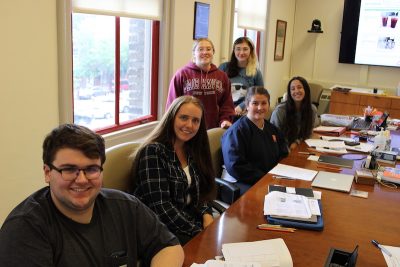
That last scenario is certainly the case for six SUNY-ESF graduates who, in summer 2022, enrolled in the SU School of Education’s (SOE) 13-month master’s degree program in Science Education (Grades 7-12).
Recruiting science students from SUNY-ESF just made sense to Sharon Dotger, Associate Professor and science education program leader. “Science education students must have a bachelor’s degree in a science that aligns with New York State’s criteria for the subject-area certification. SUNY-ESF offers 27 undergraduate programs, many of which are aligned with biology certification. Our close proximity and collaborative arrangements with SUNY-ESF make communication regarding our master’s program relatively easy.”
“Having a critical mass of SUNY-ESF alumni beginning their teacher preparation together as a cohort has the potential to support them on their journey as well as catalyze a deeper relationship in the future for the two institutions,” notes SOE Interim Dean Kelly Chandler-Olcott.
Dotger first met with prospective science education students at SUNY-ESF before the 2021 winter break. She explained the advantages and benefits of SOE’s science education teacher preparation program, including a curriculum that focuses on putting equitable and antiracist education into practice, a 50% SOE scholarship for all master’s and certificate students, New York State teacher certification for successful graduates, and extensive, guided field placements that begin within a few weeks of the start of SOE classes.
“This term, my students have a nine-week, half-day field placement in Jamesville-Dewitt or Solvay, two local school districts where I have had long-standing collaborations with science teachers,” says Dotger. “I’m grateful that host teachers have been so welcoming, and I know that the teacher candidates will have opportunities to practice the inclusive and equitable science teaching we’re studying in methods class.”
“Our candidates are clear that science is relevant to the daily lives of everyone,” adds Dotger, “and this course and its placements are designed with the intent of our student teachers helping young people develop that clarity, too.”
“The idea of an accelerated one-year program that prioritized antiracist pedagogy drew me to this program. Now, more than ever, we need teachers who can work collaboratively to educate diverse learners in a way that honors each student’s strengths and needs.”
—Meghan Morrol G’23
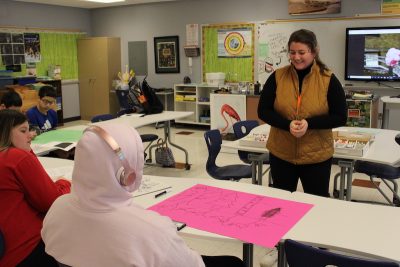
Meet the SUNY-ESF Science Education Cohort
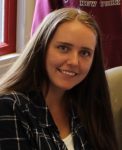 Lara Collins
Lara Collins
- Hometown: Coppell, TX
- SUNY-ESF Major: Wildlife Science
- Activities/Hobbies: Hiking, snowboarding, swimming, kayaking—“Basically anything related to the outdoors and nature”
What drew you to the M.S. in Science Education?
The fact that it’s a one-year program, the 50% scholarship, and that I qualify for a teaching certificate if I successfully complete the program. Also, there is no relocation because the program and placements are in the Syracuse area, and I can teach older school students, which I prefer.
What do you hope to learn that you can bring to your classroom?
I want to learn from my peers about how to be a student teacher. I also want to understand how to deal with bullying, how to communicate with parents, and so forth. I hope to take ideas I like but also remember things I don’t want to duplicate in my class.
Why should young students learn and understand science?
We are continuously expanding our knowledge about the earth, but so much still needs to be discovered. Young students need to learn about scientific methods so they can solve problems and create a better quality of life.
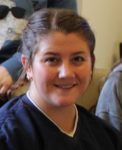 Mary Hillebrand
Mary Hillebrand
- Hometown: Buffalo, NY
- SUNY-ESF Major: Environmental Education and Interpretation
- Activities/Hobbies: Syracuse University Western Equestrian Team, SUNY-ESF Bass Fishing Team, plus hiking, birding, and horseback riding
What drew you to the M.S. in Science Education?
Professors Ben and Sharon Dotger led an informational meeting at SUNY-ESF, which was recommended to me by SUNY-ESF Professor Shari Dann. They were so kind, passionate, and really got me interested in the program. I love to share the “cool stuff” about science and help people connect to nature.
What do you hope to learn that you can bring to your classroom?
I ultimately want to learn how to best engage, inspire, and empower every single student. I want to help students find their voice and show them how cool science can be.
Why should young students learn and understand science?
Science is understanding the world we live in, from what’s going on in our bodies to how you turn on the TV to how elephants came to be. Knowing how to engage in science and scientific thinking is how we make sense of the world.
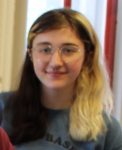 Margaret “Mae” Hurley
Margaret “Mae” Hurley
- Hometown: Rochester, NY
- SUNY-ESF Major: Environmental Education and Interpretation
- Activities/Hobbies: Writing, art, collecting, roller skating, and video games
What drew you to the M.S. in Science Education?
This is a formal teacher preparation program, with good career options and the possibility that I can travel with my degree.
What do you hope to learn that you can bring to your classroom?
An understanding of my practice, including planning, as well as learning skills and then practicing them in the field placements.
Why should young students learn and understand science?
Learning science creates informed and educated members of society that will continue to help, protect, enhance, and understand the world around us.
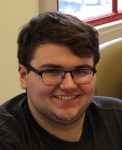 Nolan Lawroski
Nolan Lawroski
- Hometown: Shelby Township, MI
- SUNY-ESF Major: Environmental Biology, with specialties in mycology and parasitology
- Activities/Hobbies: Baking, cooking, and video games
What drew you to the M.S. in Science Education?
It was a perfect opportunity at the perfect time. And all things considered, it is relatively affordable.
What do hope to learn that you can bring to your classroom?
Classroom management, lesson planning skills, and how to adapt to different learning needs of my students.
Why should young students learn and understand science?
It is the reason we are able to understand how everything in the world works.
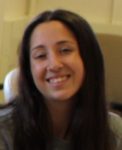 Elizabeth “Liz” Malecki
Elizabeth “Liz” Malecki
- Hometown: Buffalo, NY
- SUNY-ESF Major: Environmental Education and Interpretation, with a specialty in governmental writing and rhetoric
- Activities/Hobbies: SUNY-ESF Woodsmen team during undergraduate, plus hiking and backpacking
What drew you to the M.S. in Science Education
It was a great opportunity to further my education at an excellent school.
What do you hope to learn that you can bring to your classroom?
The methods and skills to make science more accessible for all students.
Why should young students learn and understand science?
Biology is much more than just learning about mitosis or evolution. Biology—and science as a whole—is about learning how to observe, question, and critically think about the world around us. These skills are used every day, and it is important that young people are equipped with them.
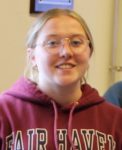 Meghan Morrol
Meghan Morrol
- Hometown: Rochester, NY
- SUNY-ESF Major: Conservation Biology, with a specialty in Native Studies and a major interest in mycology
- Activities/Hobbies: “I love all things outdoors and find myself doing lots of hiking and camping. When I am not outside or in the classroom, I am usually crocheting, writing, or doing yoga”
What drew you to the M.S. in Science Education?
The idea of an accelerated one-year program that prioritized antiracist pedagogy drew me to this program. Now, more than ever, we need teachers who can work collaboratively to educate diverse learners in a way that honors each student’s strengths and needs.
What do you hope to learn that you can bring to your classroom?
I hope to find equitable teaching strategies that push students to investigate their world and approach problems with a spirit of inquiry. At its core sciences pushes us all to meet everything with an open mind. As a teacher, I strive to reflect open-mindedness and reasoning and to constantly encourage my students to think critically about their environment.
Why should young students learn and understand science?
Young students need to learn how to ask questions and decipher the world around them using evidence. Science is crucial to preparing students to have the reasoning and inquiry needed to understand the world we live in.
Learn more about the School of Education’s master’s degree teacher preparation programs or contact SOE Graduate Admissions at soeadmissions@syr.edu.
